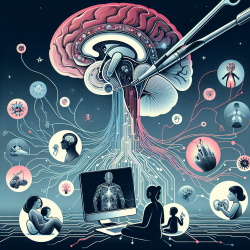Introduction
In the ever-evolving field of speech-language pathology, practitioners are continually seeking innovative methods to enhance therapeutic outcomes. One intriguing area of study that can offer unique insights is the historical research on the physiology and psychology of apparitions and dreaming. The research article titled On the Physiology and Psychology of Apparitions, Dreaming, &c. provides a comprehensive analysis of these phenomena, offering valuable perspectives that can be applied in modern therapeutic practices.
Understanding the Research
The research, published in the Journal of Psychological Medicine and Mental Pathology in 1848, explores the intricate relationship between physiological processes and psychological experiences. By examining the nature of apparitions and dreams, the study delves into how these phenomena are perceived and interpreted by individuals. This historical perspective can be particularly enlightening for practitioners aiming to understand the complex interplay between the mind and body in therapeutic settings.
Applying Historical Insights to Modern Practice
While the study is rooted in historical context, its findings can be leveraged to enhance modern therapeutic practices in several ways:
- Holistic Understanding: By appreciating the physiological underpinnings of psychological experiences, practitioners can adopt a more holistic approach to therapy, considering both mental and physical aspects of communication disorders.
- Enhanced Empathy: Understanding the historical context of how apparitions and dreams were perceived can foster greater empathy in practitioners, enabling them to connect more deeply with clients experiencing similar phenomena.
- Encouraging Further Research: The study serves as a springboard for further research into the connections between physiological states and psychological experiences, encouraging practitioners to explore new avenues for therapeutic interventions.
Encouraging Further Exploration
Practitioners are encouraged to delve deeper into the research and consider how its findings can be integrated into their practice. By doing so, they can develop more effective strategies for addressing the unique needs of their clients, ultimately leading to improved outcomes.
Conclusion
The insights gained from the research on apparitions and dreaming offer a valuable perspective for speech-language pathologists seeking to enhance their practice. By embracing these historical insights, practitioners can foster a deeper understanding of the complex interplay between physiology and psychology, ultimately leading to more effective therapeutic interventions.
To read the original research paper, please follow this link: On the Physiology and Psychology of Apparitions, Dreaming, &c.










